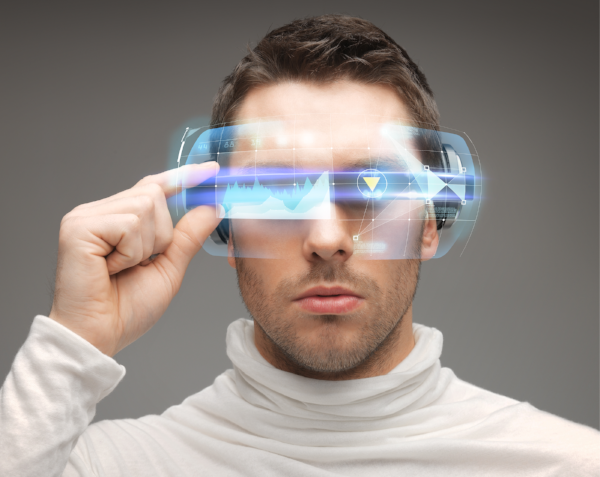Companies are turning to VR and AR solutions to help with recruiting, spark ideas — and more
![]() In recent years, as virtual reality headsets have become more widely available in the consumer market, interest in VR use has grown.
In recent years, as virtual reality headsets have become more widely available in the consumer market, interest in VR use has grown.
Similarly, interest in augmented reality — technology that transposes elements over a real-world setting, which is used in the popular Pokémon GO? app — has also been picking up speed.
AR and VR technology experienced an 85 percent growth from 2015 through the first half of 2016 alone, according to CB Insights data; an IDC forecast predicts the overall augmented and virtual reality headset market will grow from an anticipated 8.9 million units this year to 65.9 million units by 2022.
Widespread VR and AR use in the workplace may not be commonplace yet; that soon, however, may change.
Currently, there are more than 150 companies using virtual reality or AR, according to Deloitte research — including 52 in the Fortune 500. DIC projections suggest the commercial sector may see triple-digit AR and VR spending growth through 2021.
In the future, businesses could potentially use augmented and virtual reality in a number of ways — including:
Offering enhanced training
Allowing employees to see multi-dimension models of scenarios can help improve learning outcomes and provide practical experience by giving them a chance to physically react, instead of writing a response.
Currently, a combined 16 percent of companies using virtual reality
are employing it in simulation exercises or employee testing and training, according to a TechPro Research survey. Training and simulation activities are the second and third most frequent way companies are utilizing AR.
Improving recruiting
A number of organizations, ranging from the U.K. government to snack provider Mondelēz International, have incorporated gaming activities into their recruiting process.
Having candidates participate in a game can help employers assess jobseekers’ skills; AR and VR can help take that to the next level by making the experience more dynamic, allowing employers to potentially offer more complex situations that obtain more nuanced insight.
Increasing collaboration and productivity
By allowing employees to physically see, instead of just verbally discuss, proposed work, AR and VR can help fuel understanding and innovation. Aerospace company Boeing, for example, is currently testing using interactive AR diagrams to help technicians install electrical wiring. Initial theory studies have shown AR use can reduce the time spent doing work by 30 percent, according to information from the company.
Developers who participated in a Harvard Business Review survey said the largest amount of AR experiences they’re creating relate to manuals and instructions, service inspections and remote expert guidance — followed by manufacturing use, sales and marketing applications and collaborative design engineering. Collaborative and social augmented and virtual reality experiences are expected to be particularly popular in the coming year; 82 percent of startup founders, tech company executives, investors and consultants said that was now a focus among developers in a recent Perkins Coie survey.

How to Add VR and AR In the Workplace
AR may be the easier of the two technologies to implement because smartphones are a popular platform to both create and view AR. Models were introduced last year with two popular AR tools, Apple’s ARKit and Google’s ARCore, that internal or external developers can use to fashion AR experiences.
Virtual reality typically requires a somewhat more significant hardware investment. VR experiences can be created using a number of tech tools, such as a 3-D scanner, camera with a 360-degree lens or game engine; companies using virtual reality will also need to purchase headsets, which cost, on average, about US$405, according to Statista data.
Headsets generally need to be connected to a computer or smartphone to run apps; employers may also want to purchase headphones, if they’re not part of the headset device, and can opt for other accessories, such as hand controllers, to enrich the experience.
Companies using virtual reality and AR is just one tech trend that’s taking hold in work environments. Employers are utilizing a number of other emerging technologies to transform the employee experience and the way HR work, in particular, is performed.
To find out more about using VR and AR in the workplace — and other emerging tech trends — download our free HR Tech of Tomorrow white paper, which outlines what the HR technological landscape could look like in just a few years and beyond.